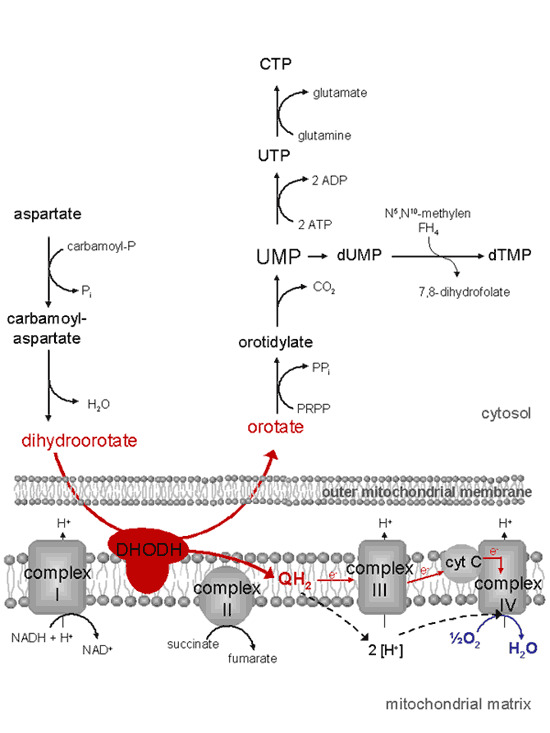Dihydroorotate dehydrogenase (DHODH) catalyzes the conversion of dihydroorotate to orotate which corresponds to the fourth reaction step within pyrimidine de novo synthesis.
In contrast to other dehydrogenases DHODH does not use NAD+ or NADP+ as electron acceptors.
In all higher eukaryotes DHODH is located in the inner mitochondrial membrane with prosthetic flavin and ubichinone as proximal and cytochrome C and molecular oxygen as final electron acceptors.

By this means pyrimidine de novo synthesis is directly connected with the mitochondrial electron transport chain and energy regeneration.
Consequently, any dysfunction of the mitochondrial electron transport chain, such as
- lack of oxygen,
- inherited or acquired deficiencies of the enzyme complexes within the electron transport chain or
- presence of inhibitors of the electron transport chain
may impair UTP, TTP, and CTP synthesis as well as RNA and DNA synthesis.
Besides their functions as ribonucleotides in RNA and desoxyribonucleotides in DNA, pyrimidines play important roles in synthetic processes. UTP is necessary for the synthesis of complex carbohydrates. CTP is involved in phospholipid synthesis.